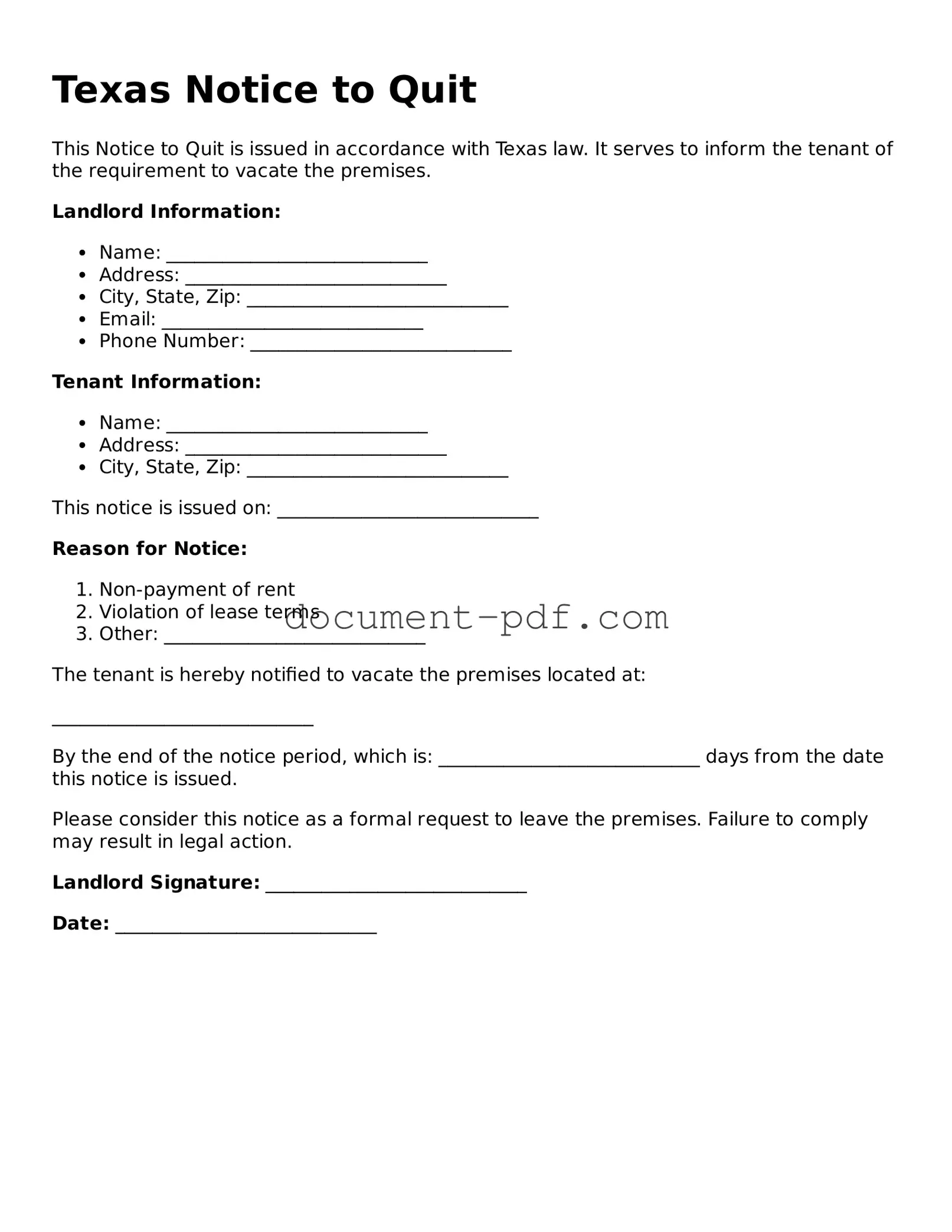Attorney-Verified Texas Notice to Quit Template
The Texas Notice to Quit form is a legal document used by landlords to inform tenants that they must vacate the rental property. This form outlines the reasons for the eviction and provides a timeline for the tenant to leave. Understanding how to properly complete this form is essential for both landlords and tenants to ensure compliance with state laws.
Ready to fill out the Texas Notice to Quit form? Click the button below to get started.
Access Notice to Quit Editor Here
